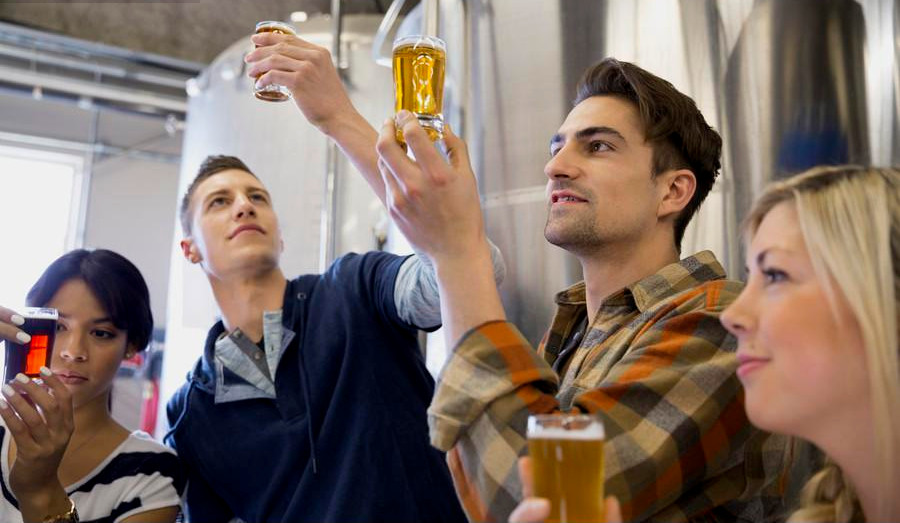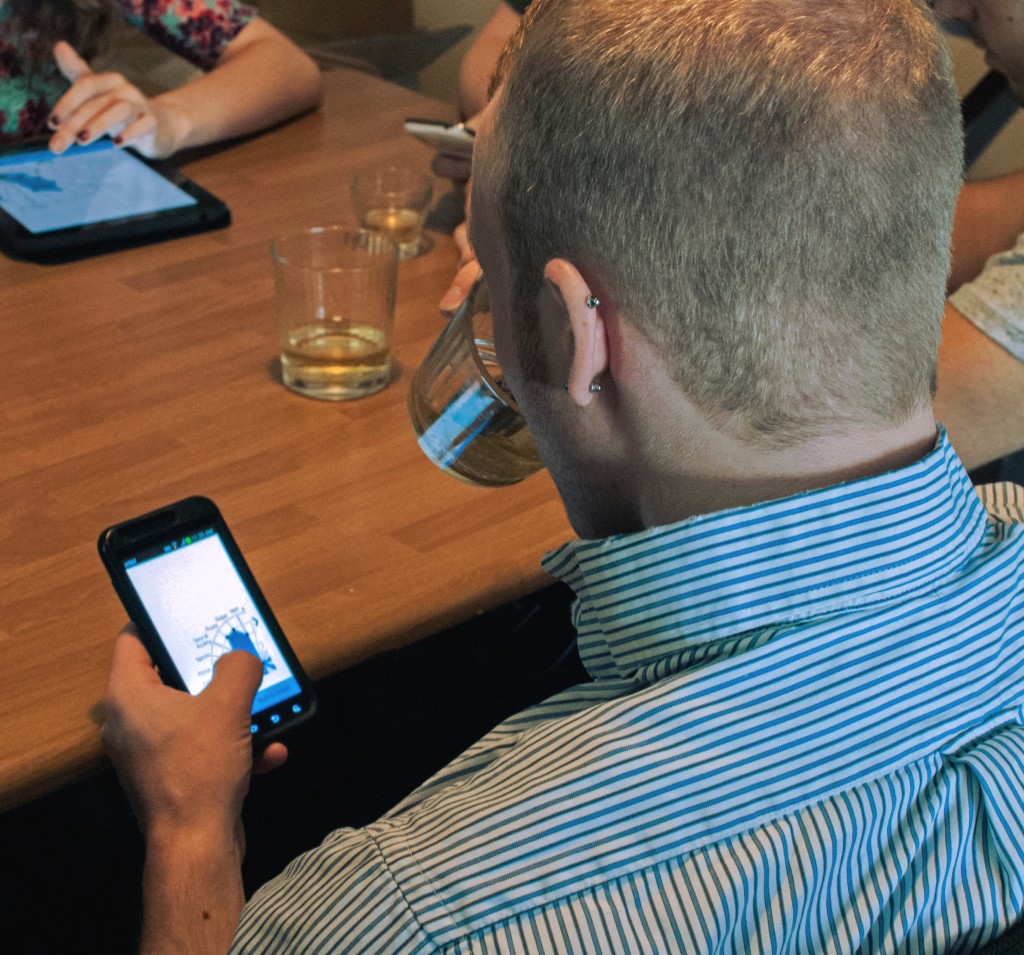
“Sensory is subjective.”
“People taste differently.”
“I don’t know what frangipani smells like.”
How many times have you ended a conversation or tasting panel believing that individuals disagree on the flavor profile of your product? Conversations like this are not only unproductive – they’re harmful to your business. They leave you with a lack of results and no idea where your product falls on the map!
Everyone believes they are a beautiful and unique snowflake, but flavor is a physiological response to an underlying sensory stimuli. It CAN be objectively measured. Our company, Analytical Flavor Systems, has analyzed tens-of-thousands of sensory reviews to build machine learning and artificial intelligence-based models for flavor profiling and quality control in the craft beer industry. Our models are capable of flagging and predicting flaws, taints, contaminations, and batch-to-batch deviations at any stage of the production process in real-time from just three to five sensory reviews. We then work with our clients to leverage their sensory data for flavor profiling, demographic targeting, product optimization, and cognitive marketing. This article will discuss the subjective realities involved in tastings including cognitive bias, physiology, and environmental factors as well as what they mean for your sensory program.
Physiology
Individuals vary in their threshold, sensitivity, and perception of flavor active compounds due to physiological factors governed primarily by genetics. Physiological factors that affect tasting scenarios include permanent attributes (such as demographic tasting population and gender), long-term attributes (such as age, experience, and adaptation), and finally, short-term attributes (such as palate fatigue, ordering effects, carryover effects, and cognitive effects). The state of a taster’s body and mind will affect and color their perception of your products.
Each person’s physiological response to flavor is as unique as their life experience and will only continue to change. Each of us are born at a different starting point; some people may be super sensitive or insensitive to the bitterness, sweetness, or acidity. However, few of us are conscious tasters when we are newborns, so what’s really critical to understand is how we develop taste and communicate it.
A taster’s development is a mixture of the culinary culture one grows up around as well as some overlap with cognitive biases which can become physiological truths. Let’s take a look at chocolate in the United States compared to Europe. Typically the standard U.S. chocolate has a much sweeter flavor profile while its European counterpart has a richer flavor profile. Part of this has to do with the laws governing chocolate manufacture in each country; in the UK a product must contain at least 25% or more cocoa solids for it to be considered milk chocolate while in the U.S. that number is only 10%. British chocolates have higher cocoa and accordingly fat content while American chocolates compensate for low cocoa with more sugar. Exposure to only one style and social acceptance of chocolate as a whole can easily lead both Brits and Americans to associate those respective profiles with a positive correlation. Demographics for flavor are actually more about exposure and popularity of certain flavor profiles as these are what people eat the most and associate positive experience after positive experience with (there are multiple exceptions to these generalities – but this holds true in general). These exposure effects and variations in perception by demographic can make or break your product’s success. For example, a chocolate stout would have a different optimal flavor profile for the typical UK craft beer drinker versus the typical US craft beer drinker due to the differing expectations of what “high quality” chocolate should taste like.
Caption: Patrick Penny completing a beer tasting using the Gastrograph System
The Gastrograph System controls for demographic-tasting-population, age, sex, race, first language, and tasting experiences through displayed-phenotypic-classification for determining physiological differences in perception amongst panelists. This allows us to create more accurate and actionable quality control and flavor profiling results from our client’s sensory data.
Cognitive Bias
Cognitive bias in a tasting scenario is primarily based around one’s personal social reality and environment and may or may not be obvious. For our first set of examples, we will start with the obvious: the ambient temperature, both outside and inside, will affect flavor preference and sensitivity; music can change an individual’s mood and perception (both together and independently); time of day will affect threshold and sensitivity to a range of flavor-stimuli.
Next come the not-so-obvious cognitive affects. Our brains organize and categorize information differently depending on what situation we are in. The expression and reactions to what your fellow panelists or tasters are tasting affects our own perception – seeing a co-worker grimace, you can assume that they are feeling displeasure; likewise, if they smile or their eyes light up you can assume they are experiencing satisfaction and pleasure. Furthermore, their descriptive language can also be a source of bias, especially depending on who says it. If a panelist mentions that she tastes a hint of pineapple, everyone’s brain processes the word and puts it at the front of their conscious mind – now it’s really difficult for other panelists to tell whether or not they’re actually tasting it as well or if it’s just at the front of their mind and they’re recreating the flavor of pineapple mentally. As a deeper example, let’s say there are five people tasting your milk stout, including the brewmaster. Two of the people are new to the team and have only done a few tastings. Anything the brewmaster says or does will be taken as a perceptual hint on her assessment of the beer by the rest of the panelists – which will further color, influence, and restrict differing opinions leading to a very one-sided and ego-driven tasting even if that wasn’t your or the brewmaster’s goal. While tasters are trying to maintain as objective a stance as possible on their review, the brain could care less. Your brain subconsciously will perceive this as a drinking scenario and everything within that ‘file’ will be present including respect for others tastes, associated feelings, and current relationship. We are subjective beings and social realities will always be a part of whatever we do in a way that only we can really know.
For these reasons, we always suggest reviews are done independently and in silence. While the Gastrograph System has filters to monitor reviews for undue influence (things like the troll filter and fanboy filter) and remove them from the analysis, companies should guard against losing data and thus key decision metrics.
Environmental
There is often a lack of attention and focus towards the environment your panelists are tasting in. A sensory quality control program needs to set aside a quiet, mostly private area for the panelists to focus their attention towards the beer and their response to that beer. Factors such as your location, the noise level, the decor of the room, and product presentation all influence the sensory experience.
Again, these factors, which we may or may not have enough conscious energy to consider are registered by the taster’s subconscious mind and taken into account. There are some methodologies that try to eliminate these as far as data collection goes, but is that the right approach?
There are two ways to deal with subjectivity: try to eliminate it to achieve results that are only objective in nature or to factor it in first then separate them to achieve an objective flavor profile. In the first methodology one would have all their tasters go into a controlled environment (often a sensory booth) that is designed to be replicated each time to achieve ‘objective’ results through a consistent environment.
Does a sensory booth actually decrease subjectivity in this scenario or are they simply limiting the scope of the subjectivity? We have found that putting a panelist in a sensory booth is simply replacing the experience of a common area with the subjective experience of an uncommon area. The panelist is almost never in one of these controlled sensory booths and the realism of the data is questionable – it distances your data from the actual perception of the end consumer whose perception and preferences decide the fate of your brand.
Instead, what if one modeled the environmental factors such as light intake, noise level, and location and found certain indications that alter the flavor profile? In simple terms, instead of trying to build in spite of subjectivity, one should build their models with and around a changing and subjective environment to achieve the most realistic data pool that most accurately represents how people are drinking your beer. For example, whether or not a consumer is drinking from your establishment and your tap room where you have control of the environment or if they picked up a six pack from the bottle shop and are drinking it at home are vastly different scenarios. How will their experience and end opinion of your product change? Flavor experiences measured and tested around different environmental variables will give you insight into the multitude of different tasting situations that exist within reality.
The Gastrograph System can control for environmental effects through sensor readings on Android and iOS phones and tablets. We take into account lighting, sound level, speed of review, time between variable selection, GPS data and weather, and seasonal effects to control for the maximum possible amount of outside variation. This allows us to build a model of the environment and control for the perceptual changes caused by these factors.
Conclusion
Subjectivity and objectivity are not enemies and they are not opposites. As far as sensory goes, they are two sides of the same coin. The current practice of sensory science does a poor job of controlling for subjectivity caused by physiology, cognitive bias, and environmental factors, often attempting to simply reduce the effects instead of including these attributes into the model of a product’s perception. Growing craft breweries should be weary of these detrimental effects on their ability to create an actionable quality control program. The Gastrograph System of Sensory Analytics is a new approach to the problem – applying machine learning and artificial intelligence to model and strip away subjectivity in sensory reviews.
Check out our resources page to learn more about how we build models of your panelists and control for physiology, cognitive bias, and environmental factors.




Be the first to comment